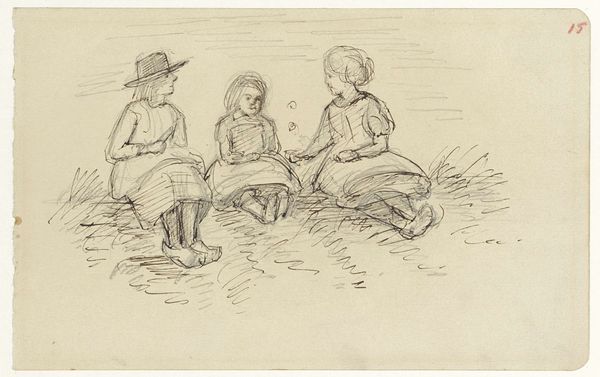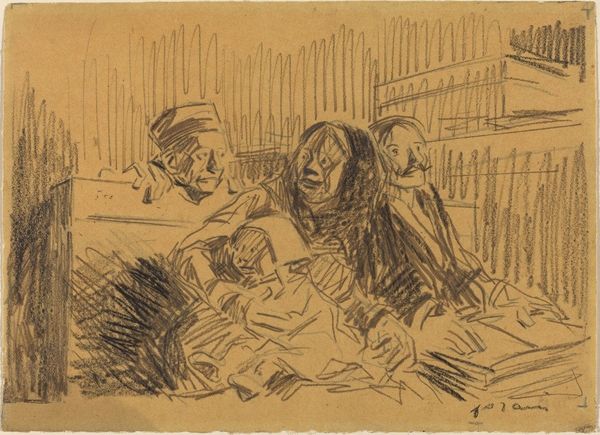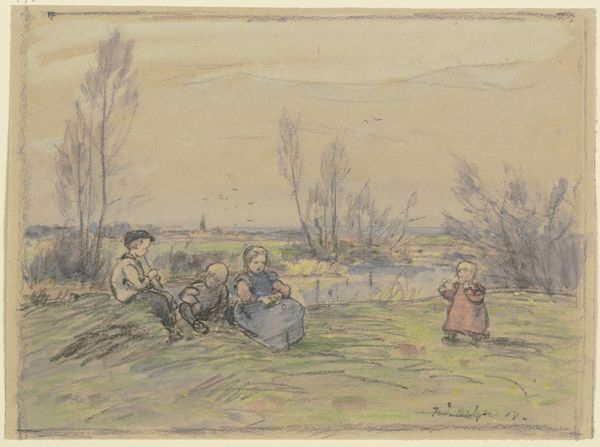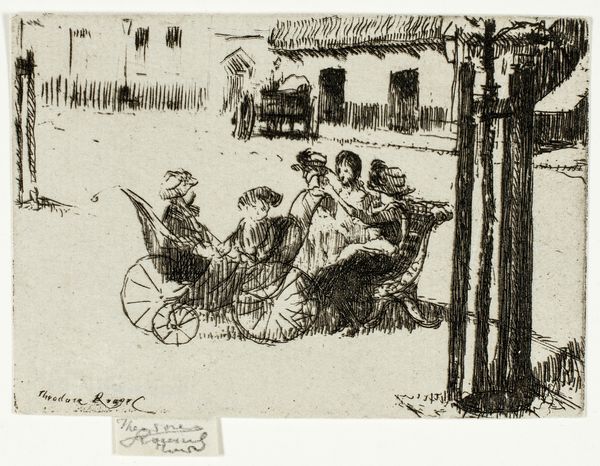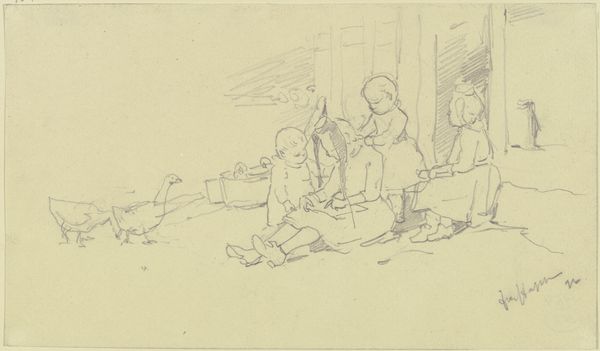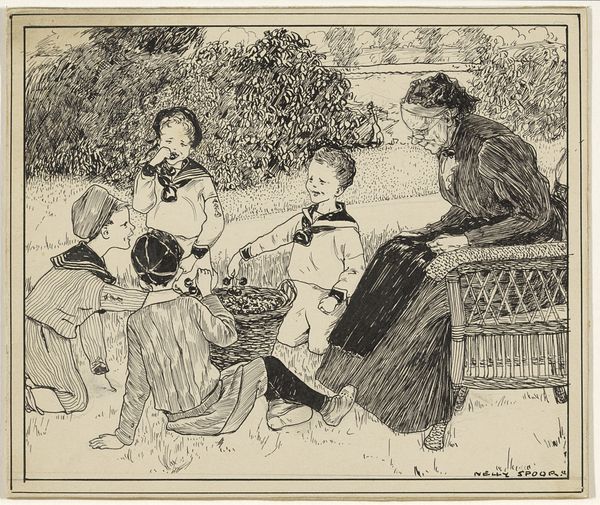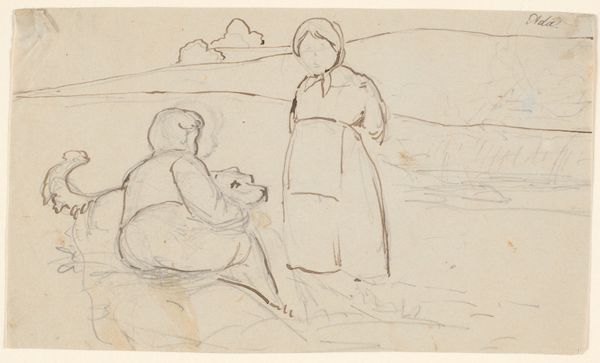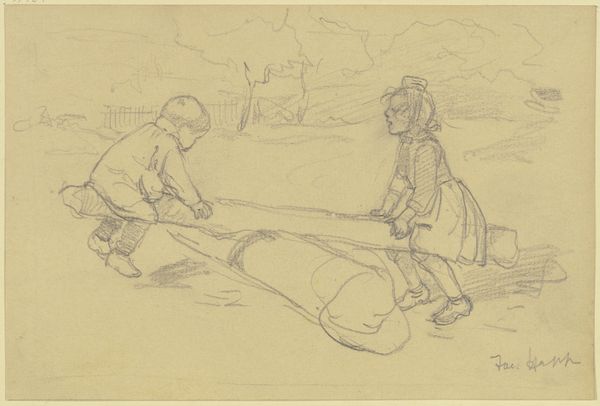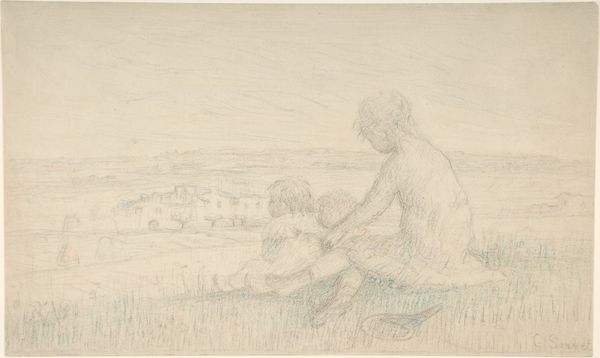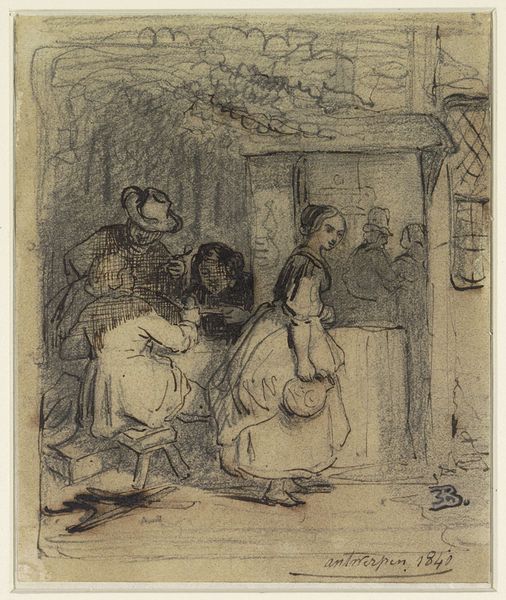
drawing, watercolor, pencil
#
portrait
#
drawing
#
impressionism
#
landscape
#
figuration
#
watercolor
#
pencil
#
watercolour illustration
#
genre-painting
#
watercolor
Dimensions: height 256 mm, width 352 mm
Copyright: Rijks Museum: Open Domain
Editor: Here we have Adolf le Comte's "Three Girls with a Dog Sitting in a Meadow," dating sometime between 1860 and 1921. It's rendered in pencil and watercolor. There’s a sense of gentle domesticity, almost like a faded photograph. What historical lenses can we use to view this artwork? Curator: This quiet scene invites us to consider the changing role of women and childhood in the late 19th and early 20th centuries. The Impressionistic style softens the portrayal, but consider how genre painting was increasingly commodified and shaped by public taste during this period. Are these girls idealized representations, or do they reflect the lived experiences of a particular social class? Editor: That's interesting. I hadn't thought about how the art market might influence what was being depicted. Do you think the way the girls are dressed offers clues about their social standing? Curator: Certainly. Notice their simple dresses and hats. These details, however seemingly insignificant, can tell us much about social status, expectations of feminine virtue, and perhaps even the aspirations of the middle class during a time of industrial expansion. What is the significance of the dog? Is the portrayal symbolic of a societal message of love, loyalty or social status? Editor: Maybe it represents childhood innocence or companionship. It's like a symbol of the girls' protected world. Considering it this way adds layers to what at first glance appeared to be simply a charming scene. Curator: Exactly. The seeming simplicity belies deeper social narratives. By considering the social context, we see how even the most pastoral image is interwoven with its time and cultural assumptions. Editor: I see how examining its historical background provides crucial understanding about the artist's intentions and cultural interpretations of "Drie meisjes met een hond zittend in een weiland.” Curator: Precisely, the historical approach adds context and complexity, prompting more discussion beyond immediate beauty.
Comments
No comments
Be the first to comment and join the conversation on the ultimate creative platform.
